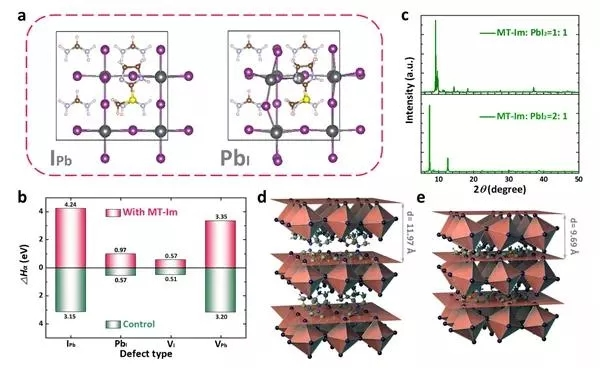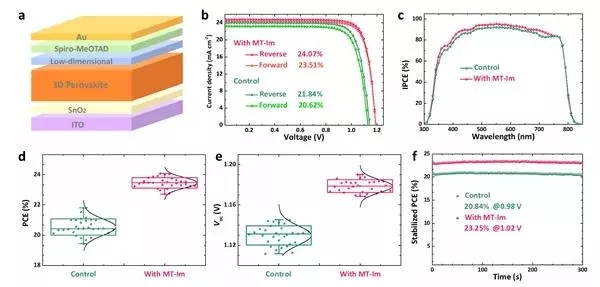Research fellow Pan Xu from the Energy Materials and Device Manufacturing Research Department of the Solid State Institute of Hefei Research Institute, Chinese Academy of Sciences, recently has made new progress in the research of perovskite solar cells.
Organic-inorganic halide perovskite is one of the materials that have attracted much attention in the photoelectric field in recent years. Due to its unique characteristics, the certified photoelectric conversion efficiency of perovskite solar cells has reached 25.5%, showing great application prospects. However, due to the ionic properties, perovskite materials inevitably produce a large number of defects in the preparation process of thermal annealing of light absorbing layer films, which will undoubtedly become the non radiative recombination center of carriers, affect the open circuit voltage of solar cells, and then lead to the decline of cell efficiency.
In addition, the research shows that the existence of a large number of defects at the interface will accelerate the degradation of perovskite films and seriously affect the long-term stability of the device. Therefore, effective interface defect management is very important to further improve device efficiency and environmental stability.

Figure. 1. (a, b) DFT calculation model and formation energy of different interface defects; (C-E) XRD test results of low dimensional perovskite

Figure. 2. (a) structural diagram of perovskite solar cell based on low dimensional perovskite interface modification; (B-F) photovoltaic performance test results of devices


